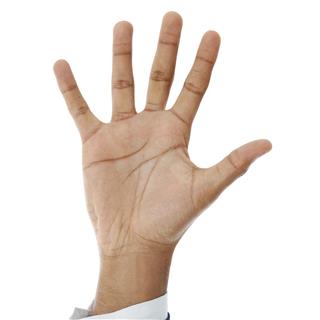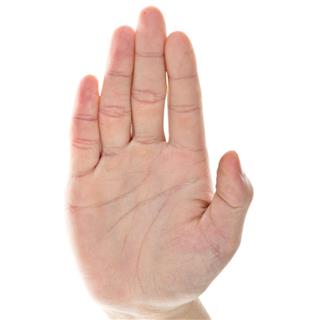
Palmistry is an ancient art wherein its practitioners and followers believe that the past, present, and future are all written in the lines in the hands. Read on to know more about this.
“To see a world in a Grain of Sand,
And a Heaven in a Wild Flower,
Hold Infinity in the palm of your hand,
And eternity in an hour.” ― William Blake
Do we hold the secrets of our past, present, and future in the palms of our hands? Are those mysterious lines traced on our hands the blueprint of our character, our fortune, and our destiny?
The ancient art of palm reading, also called palmistry or chiromancy, dates back thousands of years. Prehistoric caves in Spain and France have hands drawn on their walls with all the major lines shown in amazing detail. Taking into consideration the number of such paintings of hands in prehistoric caves, it is quite evident that humans have been fascinated by the lines on our hands since the Stone Age. Archaeological findings have uncovered hands made of ivory, stone, and wood by ancient civilizations. Information about the practices and laws of reading the hand has been found in ancient Vedic scripts of India, early Semitic writings, and the Bible. Aristotle, one of the greatest Greek philosophers who lived in 384-322 BCE, found a dissertation on palmistry on the altar to the Greek deity, Hermes. Galen and Hippocrates, both Greek physicians, were well-versed in the use of palmistry as an aid to healing. It is also said that Julius Caesar used this technique to judge his men.
Fortune tellers, or palm readers, believe that the lines and patterns on an individual’s hand, if read properly, can reveal insights into the events of the past, present, as well as future of the person. Apart from the lines, there are various other factors taken into consideration in palm reading, such as the hand’s shape, the shape and length of the fingers, how flexible the fingers and hands are, the thumb’s position, the mounts which are interpreted by their relative sizes and the intersections on them, and other qualities. In some traditions, palm readers also examine the characteristics of the nails of the fingers, fingerprints, the skin patterns on the palm, the color and texture of the skin, and so on.
A palm reader starts with the obvious and carries on via numerous intricate steps of interpretation and judgment, to minute details. The conclusions that are made are not about certainty, but of the tendency or probability. A practitioner of palmistry usually starts by studying both hands; if you are a right-handed person your left hand is thought to be the birth hand, which reveals character predispositions that are inherited, while the right hand is considered as reflecting individuality, potential, and flexibility. For left-handed people, it is the other way round.
Here is a general explanation of the various types of hands according to the art of palmistry:
The Fingers
- To begin with, the flexibility of the fingers and hands can be indicative of the character and characteristics of an individual.
- If the fingers cannot be bent backwards, it means that the person is honest and stubborn.
- If the fingers are flexible and bend backwards easily, it indicates that the person is generally well-balanced, but with an impatient nature.
- If the fingers are wedge shaped, it implies that the person is very creative and active.
- When the fingers are pointy, it indicates that the person is very sensitive, creative, and artistic. Often, people with this type of fingers display an interest towards the occult or religious matters.
- Tapering fingers suggest a dreamer, who often has artistic talent.
- If a person’s fingers are square shaped, it means that he/she is honest, but may not be very original.
The Hands
- Lean and firm hands indicate that the person is very economical.
- Firm and strong hands mean that the individual has a dependable character.
- If the palms of the hands are cupped deeply, it usually is indicative that the person will not be good in business.
- A flabby and soft hand is a sign that the person likes to lead an easy life.
The Lines
According to palmistry, there are six lines of very high importance on the palm. By reading and interpreting these lines, an individual’s character, personality, and the path he/she will choose in life can be understood. The six lines are separated into two groups: the three major lines and three minor lines. Following is a discussion about the three major lines on the palm of our hands.
Life Line
- If this line is solid, it means a pleasant and good life with plenty of rewards.
- If the life line circles the thumb, it indicates that the individual has a lot of psychical activity in his/her life.
- If the life line is positioned higher than usual, i.e., closer to the index finger, it suggests an ambitious person and a great ability to stick to a task even when things get tough.
- If the depth and thickness of the line varies, it may mean that there will be lots of changes in life with many twists and turns of fortune.
- If the line goes towards the mount of the moon, it is indicative of a restless nature.
- If the life line merges with the head line closely, it indicates a cautious and timid character. However, if there is a gap between them, then the individual will display quite the opposite characteristics, being rather reckless and acting on impulse.
- A wavy and broken life line usually means weakness of some nature, in physical or mental capabilities.
- A life line full of chains implies a poor disposition. However, if there is another line running parallel to it, it indicates a healthy disposition.
- If this line ends in a fork, it means that the individual will be dependent on the kindness of others when he/she gets old.
Head Line
- If the head line is straight and well-defined, it indicates sound and clear judgment.
- If this line is long, it indicates that the person will make a good diplomat and will achieve their goals in life by this.
- However, if it runs all across the palm, right to the edge, then the person may be rather ruthless in character, putting business before feelings and people.
- If the head line joins the heart line right at the beginning, then it may indicate that the individual may have a hard life with a lot of suffering.
- If this line is very short, it indicates that the individual will not be persistent about anything, and will have a tendency of giving up easily and quickly.
- A weak line indicates that the person will be very soft, and will rarely ventures into anything new.
- If the line is slightly wavy, it is indicative that the person may find it difficult to deal with the everyday demands in their life.
- If the line is chained, it indicates mental illness or some kind of mental disability that will come in the future.
- If the head line sweeps down the palm and ends in a fork, it indicates a very intelligent individual. However, if there is a break in the line, it can mean that the person may be afflicted by deep depression.
Heart Line
- If the start of the heart line is high, it indicates a jealous type of an individual; whereas if it is low, it means that the person will love in a rational and serene way. But if it is very low down, it is indicative of a cold nature.
- If the starting point of the line is right under the mount of Saturn, it means that the individual will encounter one devastating and true love.
- If the heart line is strong, it shows that the person is capable of faithful and true love.
- If the heart line joins the head line, it means that the person allows the heart to be ruled by the head.
- A double line indicates a long and not a very happy love affair.
- If a line is found close to the heart line, then the chances are high that somebody close will die.
- A heart line that is wavy is indicative of a person who lacks self-confidence, especially where matters of the heart are concerned.
- If the heart line is chained, it indicates a flirtatious nature, and a person who may find it difficult to be faithful.
- A hand that is devoid of the heart line indicates that the person has an inability to love anybody else but themselves.
The three minor lines are: The Fate Line; The Health Line; and The Sun Line, which is also called the Line of Apollo. Some people have all the three lines, but that is not usual. Deeper understanding about the individual can be discerned depending upon which other lines crisscross these lines. Another interesting factor is that lines keep changing, although most of us may not discern the changes. Also, where each line begins and ends is very important.
Girdle of Venus and Bracelets
The two other lines that are considered important are the Girdle of Venus and the Bracelets. The Girdle of Venus is positioned on the upper portion of the palm and runs from the index finger to the little finger. While in some people a complete ring is formed by the Girdle at the base of the fingers, in some hands it does not occur at all. The Bracelets, which are also called Rascettes, are the bands of line that can be found at the base of the palm, on the wrist. If the bracelets are high up, it is considered to be a sign of weakness of the internal organs.
Palmistry – A Psuedoscience?
This ancient art of palm reading is thought to be a pseudoscience by many today, as it is considered to be based on unproven theory rather than science, and since none of its claims can be verified by scientific testing. However, according to recent research, it has been shown that there is indeed an uncanny link between the lines on the hand and how a person’s life manifests itself.
In fact Cheiro, who popularized palmistry by his books like The Language of the Hand, displayed startling clairvoyance by predicting accurately events that were to happen to several famous personalities like Prince Edward, Joseph Chamberlain, General Kitchener, Sarah Bernhardt, Mark Twain, Oscar Wilde, and Marilyn Monroe, simply by reading the lines on their hands. Oscar Wilde was so amazed by his encounter with Cheiro that he wrote a short story based on it, Lord Arthur Saville’s Crime.
While many are convinced whole heartedly about palmistry having the ability of foretelling the future, yet others of a more skeptical bent of mind associate it with magic and sorcery, and hence dismiss it.















